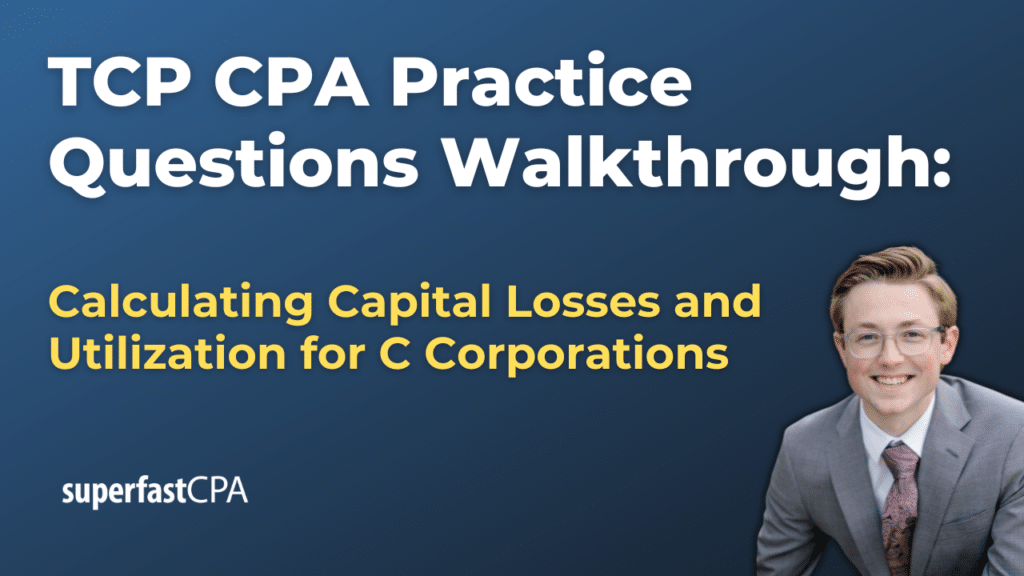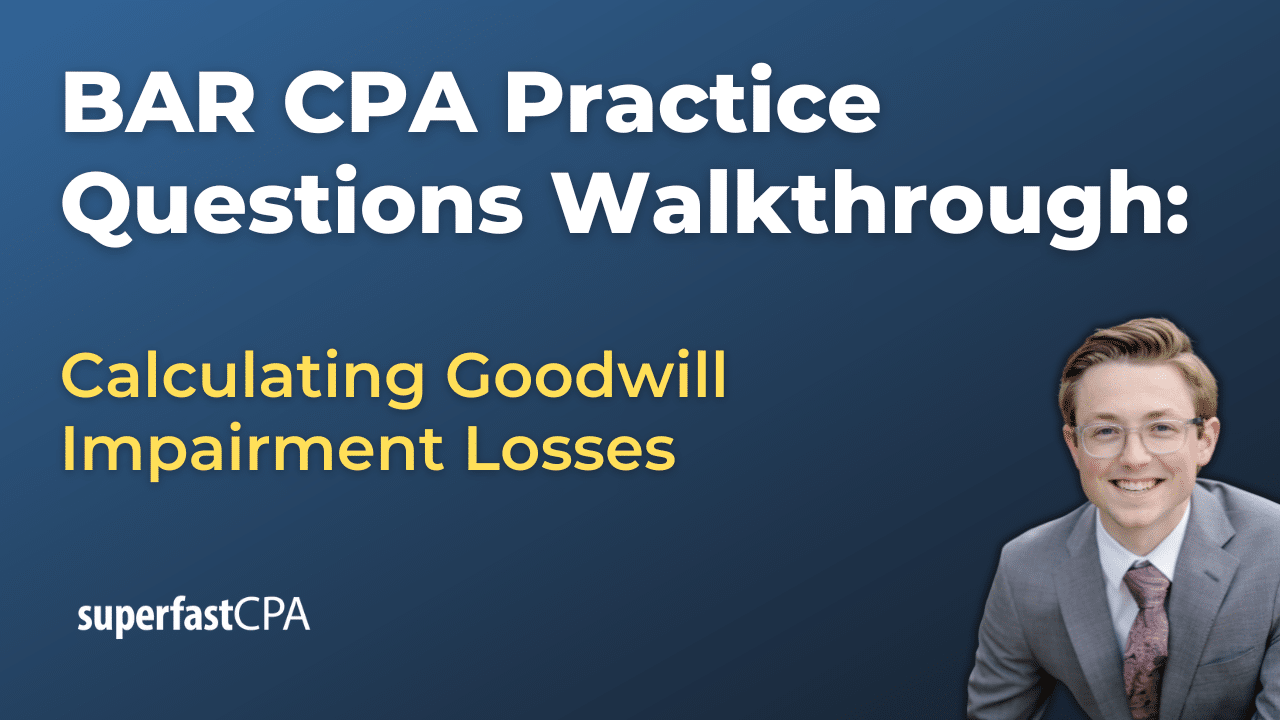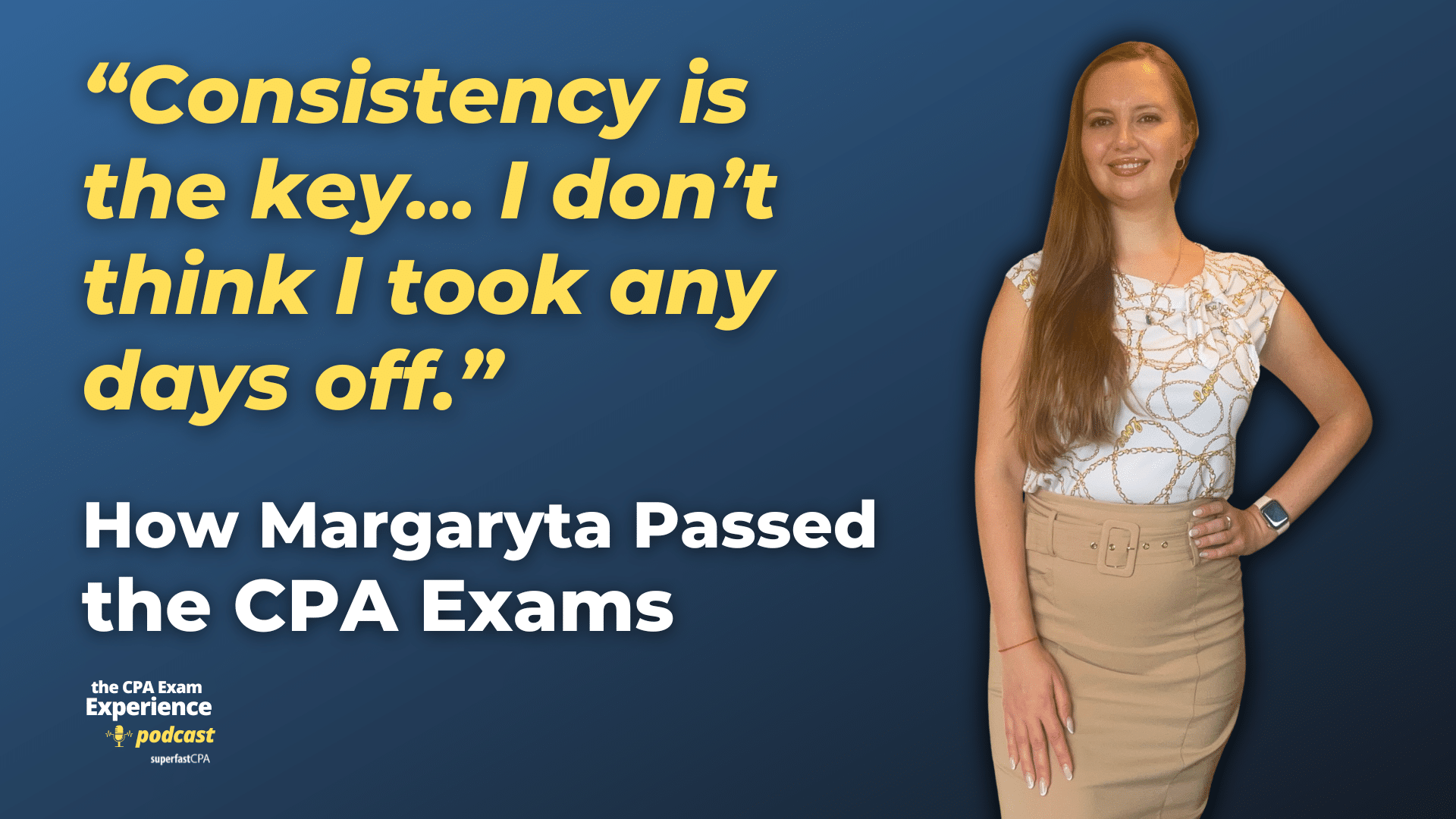In this video, we walk through 5 TCP practice questions teaching about calculating capital losses and utilization for C corporations. These questions are from TCP content area 2 on the AICPA CPA exam blueprints: Entity Tax Compliance.
The best way to use this video is to pause each time we get to a new question in the video, and then make your own attempt at the question before watching us go through it.
Also be sure to watch one of our free webinars on the 6 “key ingredients” to an extremely effective & efficient CPA study process here…
Calculating Capital Losses and Utilization for C Corporations
C corporations, like individuals, can experience gains and losses from their investments and sales of assets. Understanding how to calculate and utilize capital losses is crucial for tax planning and minimizing tax liabilities. This overview will explain the treatment of capital losses for C corporations, including how they are calculated, utilized, carried back, and carried forward, supported by detailed examples.
Capital Gains and Losses
Capital gains and losses arise from the sale or exchange of capital assets. These assets can include stocks, bonds, real estate, and equipment. Gains and losses are categorized as either short-term (held for one year or less) or long-term (held for more than one year).
Net Capital Loss Calculation
To calculate a net capital loss, a corporation must first determine the net short-term and net long-term capital gains or losses:
- Net Short-Term Capital Gain/Loss: Subtract total short-term capital losses from total short-term capital gains.
- Net Long-Term Capital Gain/Loss: Subtract total long-term capital losses from total long-term capital gains.
The overall net capital gain or loss is the sum of the net short-term and net long-term amounts. If the result is negative, it represents a net capital loss.
Example 1: Calculating Net Capital Loss
Suppose Pine Corporation has the following gains and losses in 2021:
- Short-term capital gain: $20,000
- Long-term capital gain: $15,000
- Short-term capital loss: $30,000
- Long-term capital loss: $10,000
First, calculate the net short-term and long-term gains/losses:
- Net short-term capital gain/loss: $20,000 (gain) – $30,000 (loss) = -$10,000 (loss)
- Net long-term capital gain/loss: $15,000 (gain) – $10,000 (loss) = $5,000 (gain)
The total net capital gain/loss is:
- Total net capital gain/loss: -$10,000 (short-term loss) + $5,000 (long-term gain) = -$5,000 (loss)
Utilizing Capital Losses
C corporations cannot use capital losses to offset ordinary income. They can only offset capital gains. If a corporation has a net capital loss, it can carry the loss back to previous years or forward to future years.
Carryback and Carryforward Rules
Capital losses can be carried back three years and carried forward up to five years. When carrying back or forward, net capital losses are treated as short-term losses.
Example 2: Carrying Back and Forward
Elm Corporation incurred a net capital loss of $80,000 in 2021. The corporation decides to carry back the loss to previous years, where it had the following capital gains:
- 2020: $25,000
- 2019: $40,000
- 2018: $10,000
Elm Corporation will apply the capital loss to the capital gains of the preceding three years, starting with the furthest year:
- 2018: $10,000 (offset by capital loss)
- 2019: $40,000 (offset by capital loss)
- 2020: $25,000 (offset by capital loss)
Total utilized in three years = $25,000 + $40,000 + $10,000 = $75,000
Remaining capital loss = $80,000 – $75,000 = $5,000
Therefore, $5,000 of the capital loss will be carried forward and treated as a short-term capital loss in future years.
Example 3: Impact on Taxable Income
Fir Corporation has a taxable income of $150,000 for 2021. The corporation reported the following gains and losses:
- Short-term capital gain: $20,000
- Long-term capital gain: $40,000
- Short-term capital loss: $15,000
- Long-term capital loss: $10,000
There is also a capital loss carryforward from 2020 of $25,000. The net capital gains and losses for 2021 are calculated as follows:
- Net short-term capital gain/loss: $20,000 (gain) – $15,000 (loss) = $5,000 (gain)
- Net long-term capital gain/loss: $40,000 (gain) – $10,000 (loss) = $30,000 (gain)
- Total net capital gain: $5,000 (short-term gain) + $30,000 (long-term gain) = $35,000 (gain)
After applying the capital loss carryforward from 2020:
- Total net capital gain: $35,000 – $25,000 = $10,000 (gain)
Since capital gains count towards taxable income, Fir Corporation’s taxable income for 2021 is:
- Taxable income: $150,000 (ordinary income) + $10,000 (net capital gain) = $160,000
Conclusion
C corporations must carefully manage their capital gains and losses to optimize tax liabilities. Understanding how to calculate net capital losses, utilize them, and apply carryback and carryforward rules is essential for effective tax planning. By treating capital losses as short-term in carryback and carryforward years and only offsetting them against capital gains, corporations can ensure compliance with tax regulations and potentially reduce their overall tax burden.












